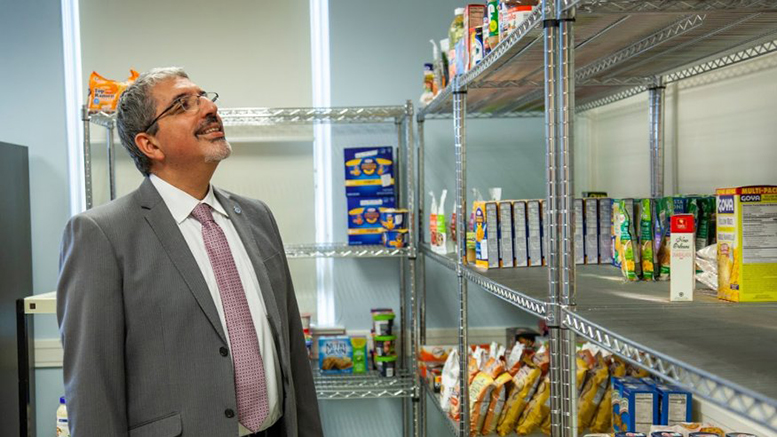Nearly 60 percent of college students experiencing food insecurity who could be eligible for help through a $68 billion federal nutrition assistance program don’t participate in it, according to a new Government Accountability Office (GAO) report.
About 57 percent of potentially eligible low-income students at risk for food insecurity in 2016 did not participate in the Supplemental Nutrition Assistance Program (SNAP), the report says. Typically, these students didn’t know they may be eligible, and in some instances school officials did not know enough details about SNAP to refer students to the program, it adds.
In some states, students who enroll in certain employment and training (E&T) programs — often offered at two-year colleges and other community-based organizations — may be eligible for SNAP benefits. GAO cites that SNAP E&T programs operate at all 34 community colleges in Washington state and have served about 20,000 students each fiscal year since 2015. State officials there noted that most incoming community college students in Washington are screened for potential eligibility and provided “reverse referral” into the state’s SNAP E&T program services.
A growing concern
Food security is already among the top concerns for community college leaders, who note that hunger can hamper students’ ability to succeed in school, often leading them to drop out of college. The GAO report notes that the federal government provides more than $122 billion in grants, loans and work-study funds through student aid programs, but that investment “is at risk if college students drop out because they cannot afford basic necessities like food.”
The report adds that an increasing percentage of students from low-income households are enrolling in college. According to federal data, the percentage of all undergraduates living in poverty increased from 28 percent in 1996 to 39 percent in 2016.
Although it’s difficult to peg how many college students are experiencing food insecurity, national data indicate about 17 percent of households with a student in a community college experienced food insecurity, compared to 11 percent of four-year college students, GAO says.
Common practices
The agency examined 14 colleges — including seven two-year colleges — in California, Kentucky, Massachusetts, and Michigan on how they addressed food insecurity among their students. All of the colleges educate their students about resources available to address food insecurity in a variety of ways, such as providing information during student orientations, on flyers and pamphlets, or through social media and text messages. Most of them hold trainings or distribute information to faculty and staff — often the first people on campus to notice if a student needs assistance — about on-campus and community resources.
Related stories: ‘Farm Bill makes some changes to SNAP’ and ‘SNAP can serve certain college students’
All of the 14 colleges also provide students free food — including food pantries — and most offer emergency financial assistance through small one-time loans, grants, or grocery store or gas station gift cards. GAO cites a community college it visited that directly ties such assistance to its retention efforts, providing up to $500 for students determined to have sufficient need and who are likely to remain in school if the bill is paid.
Centralizing efforts
Several of the examined colleges have started to centralize and coordinate student services and access to benefits. Some now use a case-management approach to better collaborate across departments and more efficiently address students’ basic needs.
“One community college we visited has co-located many of its student services — including its financial aid, academic counseling, payroll, food pantry, veterans’ services and women’s resource center, among others — around a central hub of the student union,” the report says. “Students visiting this central hub may be assigned a caseworker to connect them with the on-campus, community, state and federal benefits for which they are eligible.”
More than half of the 14 colleges also reported having a coordinated benefits access program or screened students for potential eligibility for federal and state benefit programs, such as SNAP, Medicaid and the Earned Income Tax Credit.
“One community college we contacted had a staff member build a statistical model to analyze the college’s existing data on first-time students, such as data on students’ household income, demographics, and course enrollment, to identify students at risk of not returning to college and to provide these students, their professors, and their faculty advisors with information about on-campus resources,” the report notes.
The GAO report comes at the request of Democratic senators who asked for a study on food insecurity at U.S. colleges and universities.
Related stories: ‘Food scholarships could help more students finish college’ and ‘Campus food pantries proliferate’

